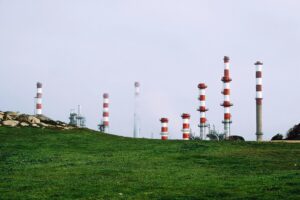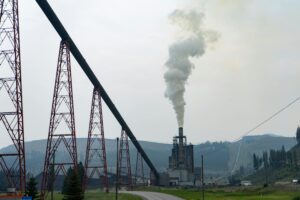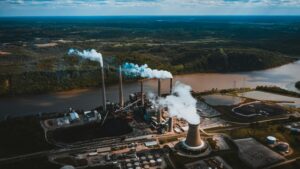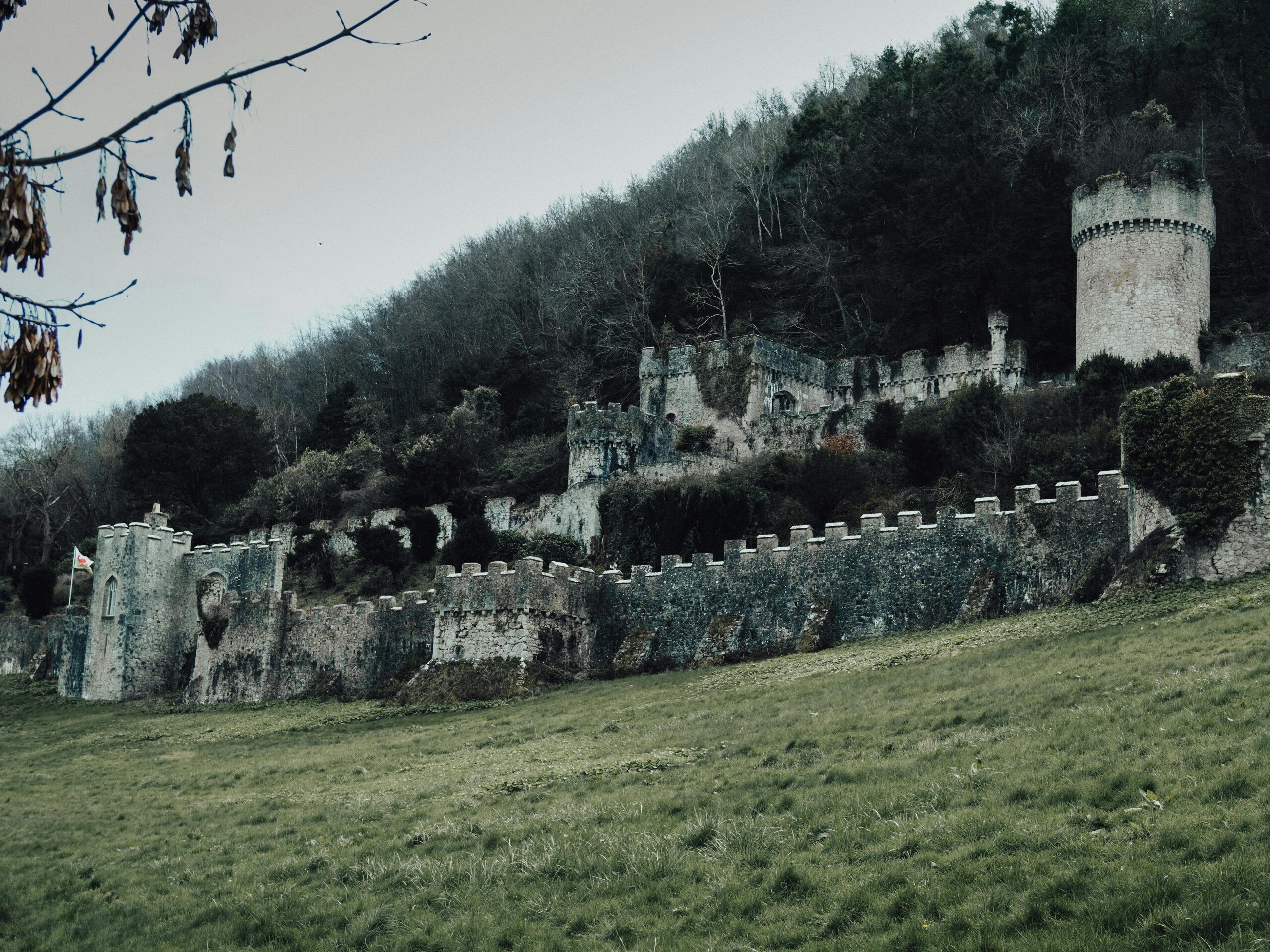What Was the Industrial Revolution?
The Industrial Revolution was a transformative period in human history, spanning from the late 18th century to the mid-19th century. It marked the shift from manual labor and agrarian economies to machine-based manufacturing and industrial production. This revolution began in Great Britain and eventually spread to other parts of Europe, North America, and beyond.
At its core, the Industrial Revolution and its impact reshaped how people lived, worked, and interacted with one another. Prior to this era, most individuals worked on farms or in small workshops. But with the introduction of factories, steam engines, and mechanized tools, production became faster, cheaper, and more centralized.The Industrial Revolution
Key Characteristics of the Industrial Revolution:
-
Introduction of mechanized manufacturing.
-
Use of steam power and later electricity.
-
Growth of factories and urban centers.
-
Development of transportation systems like railroads and steamships.
-
Expansion of capitalism and global trade.
The Industrial Revolution and its impact extended far beyond economics. It played a major role in social change, including urbanization, changes in family structures, and the emergence of new social classes.
Key Economic Impacts of the Industrial Revolution
The Industrial Revolution and its impact on the global economy was profound and long-lasting. It fundamentally altered how goods were produced, how labor was used, and how wealth was distributed.
Before the Industrial Revolution, economies were primarily agrarian and based on manual labor or small-scale artisanship. The rise of mechanized manufacturing and factory systems dramatically increased production capacity, lowered costs, and expanded markets.
1. Rise of Factory-Based Economies
One of the most significant economic impacts was the shift from home-based production (cottage industries) to factory-based manufacturing. This led to mass production of goods, which reduced the cost per unit and made products more affordable and accessible.
2. Growth of Capitalism and Investment
The Industrial Revolution and its impact encouraged a surge in capitalist enterprise. Entrepreneurs invested in machinery, transportation infrastructure, and labor. Stock markets and banking institutions expanded rapidly to meet the needs of growing industries.
3. Urbanization and Job Creation
With factories located in or near cities, rural populations migrated en masse to urban centers in search of employment. This urbanization created both opportunities and challenges—higher employment but also overcrowding and poor living conditions.
4. Expansion of Global Trade
The increased production of goods required new markets. Countries began exporting manufactured products and importing raw materials, leading to the expansion of global trade networks and the rise of industrial imperialism.
5. Wage Labor and Class Stratification
A new economic order emerged, driven by wage labor. Workers sold their time for money, often in difficult conditions, while factory owners accumulated significant wealth. This contributed to the development of a clear class divide—between capitalists and laborers.
Social Transformations During the Industrial Revolution
The Industrial Revolution and its impact extended far beyond economics—it radically reshaped the fabric of society. As machines took over manual labor and urban centers grew, the way people lived, worked, and interacted changed forever.
1. Shift from Rural to Urban Life
Before the Industrial Revolution, most people lived in small villages and worked on farms. As factories opened in cities, people moved in large numbers to urban areas, sparking massive urban migration. This led to the growth of crowded industrial cities like Manchester, Birmingham, and Chicago.

2. Changes in Family Structure
The traditional extended family structure weakened as people moved into cities. In many cases, every member of the family—including women and children—worked in factories. This led to smaller, nuclear family units and significantly altered family dynamics and roles.
3. Rise of a New Working Class
A distinct industrial working class emerged. These laborers often worked long hours in poor conditions for low wages. At the same time, a wealthier middle class—comprising factory owners, merchants, and professionals—gained prominence, intensifying class divisions.
4. Labor Movements and Social Activism
As workers faced exploitation, the labor movement gained momentum. Unions were formed to fight for better wages, working conditions, and shorter hours. This era also saw the early roots of socialism and other ideologies that challenged the capitalist system.
5. Women and Children in the Workforce
One of the most dramatic social changes was the entry of women and children into the industrial workforce. While this offered new opportunities for some, it also led to abuse, poor working conditions, and calls for labor reforms.
6. Impact on Education and Literacy
The need for skilled labor and informed citizens led to the expansion of public education systems. Literacy rates improved, especially in urban areas, and education began to be viewed as essential to economic and social progress.
Final Thoughts
The Industrial Revolution and its impact on society was transformative. It disrupted traditional lifestyles, reshaped social classes, and laid the foundation for modern urban life. While it brought progress and innovation, it also created new challenges that are still relevant today.
Technological Innovations That Changed the World
The Industrial Revolution and its impact are inseparable from the technological breakthroughs that defined the era. These innovations not only increased productivity but also fundamentally reshaped industries, transportation, communication, and everyday life.
1. The Steam Engine
Perhaps the most transformative invention of the Industrial Revolution, the steam engine powered factories, trains, and ships. Invented by James Watt, it allowed businesses to move away from water sources and increased the scale of production dramatically.k.
2. The Spinning Jenny and Power Loom
In the textile industry, innovations like the Spinning Jenny, water frame, and power loom revolutionized the production of cloth. These machines increased output while reducing the need for manual labor, making textiles cheaper and more accessible.
3. The Telegraph
Invented in the 1830s and commercialized by Samuel Morse, the telegraph revolutionized communication. For the first time in history, information could be sent over long distances in minutes rather than days, a key milestone in the development of global trade and coordination.
4. The Railroad
Railroads enabled the rapid movement of goods and people across vast distances. This innovation opened new markets, connected rural areas to cities, and drastically reduced transportation time and costs—making it one of the pillars of the Industrial Revolution and its impact on infrastructure.
5. The Bessemer Process
This innovation allowed for the mass production of steel by blasting air through molten iron to remove impurities. Stronger and cheaper steel enabled the construction of railways, bridges, and skyscrapers, ushering in a new era of urban and industrial development.
6. Agricultural Mechanization
Technologies like the mechanical reaper and seed drill revolutionized agriculture by increasing productivity and reducing manual labor. This pushed many workers toward factory jobs, accelerating urban migration and economic change.
Final Thoughts
Technological innovations were the driving force behind the Industrial Revolution and its impact on every corner of society. These inventions not only changed how industries operated but also laid the groundwork for the modern technological world we live in today.
Environmental and Labor Challenges of the Industrial Revolution
The Industrial Revolution and its impact reshaped societies and economies across the globe. While this era introduced remarkable technological and industrial advancements, it also brought significant environmental and labor challenges that cannot be overlooked.
Environmental Challenges
1. Air and Water Pollution
The rapid expansion of factories during the Industrial Revolution led to a heavy reliance on coal. This resulted in thick smoke and toxic emissions filling the air in urban centers. Additionally, industrial waste was often dumped directly into rivers and streams, severely polluting natural water sources.
2. Deforestation and Resource Exploitation
To meet industrial demands, massive deforestation occurred. Forests were cleared to make way for railways, buildings, and fuel sources like timber and coal. This unchecked exploitation led to a loss of biodiversity and ecological imbalance.
3. Urban Overcrowding and Poor Sanitation
Industrialization drove mass migrations to cities. However, cities were unprepared for the influx of workers. Overcrowded living conditions, poor sanitation, and lack of clean water contributed to outbreaks of diseases and poor public healthLabor Challenges
4. Unsafe Working Conditions
The Industrial Revolution and its impact were particularly severe for workers. Factory environments were dangerous, with unguarded machinery, inadequate ventilation, and minimal safety measures. Accidents and long-term health issues were common.
5. Child Labor
Children were widely employed because they could be paid lower wages and fit into tight spaces in mines and factories. Many worked 12–16 hours a day in dangerous conditions, depriving them of education and causing lasting health effects.s.
6. Low Wages and Long Hours
Workers, including women and children, often received extremely low pay and worked grueling hours. There were no minimum wage laws, and the rights of workers were largely ignored during the early stages of industrialization.
The Rise of Labor Movements
In response to these harsh conditions, workers began forming unions and organizing strikes. These movements laid the foundation for labor laws, workplace safety standards, and the eventual improvement in working conditions.
Conclusion
While the Industrial Revolution and its impact paved the way for modern development, it also highlighted the need for ethical labor practices and environmental stewardship. Recognizing the challenges faced during this period helps ensure that future progress is both sustainable and humane.
Long-Term Legacy of the Industrial Revolution
The Industrial Revolution and its impact continue to shape the modern world in profound ways. What began as a period of innovation and mechanization in the late 18th century left a lasting legacy that still influences how we live, work, and interact with the environment today.
1. Modern Economic Growth
The Industrial Revolution marked the shift from agrarian economies to industrial and capitalist systems. This change laid the foundation for modern economic structures, including mass production, wage labor, and global trade.
2. Urbanization and Infrastructure Development
Rapid industrialization led to the growth of cities. Roads, railways, and communication systems expanded, leading to the rise of modern urban life. Many of today’s major cities owe their structure and economic importance to this period.
3. Advances in Technology and Innovation
The Industrial Revolution set the stage for continuous technological advancement. Inventions like the steam engine, power loom, and telegraph sparked an innovation chain that eventually led to electricity, automobiles, computers, and AI.
4. Transformation of Labor and Industry
Work shifted from small family farms and workshops to factories and corporations. This gave rise to new labor classes and influenced modern labor laws, unions, and workplace rights—many of which are still evolving today.
5. Environmental Awareness
While the Industrial Revolution contributed to severe environmental degradation, it also led to greater awareness and action. Environmental movements and sustainability efforts today stem partly from the lessons learned during industrial expansion.
6. Global Influence
The Industrial Revolution and its impact weren’t limited to one country. Its effects spread globally, affecting colonization, economic policies, and cultural exchanges. Developing countries today still grapple with balancing industrial growth and sustainability.
Conclusion
The long-term legacy of the Industrial Revolution is complex. It brought about unmatched progress but also introduced significant challenges. Understanding this legacy helps us make informed decisions about technology, labor, and the environment in the future.T
Conclusion: Why the Industrial Revolution Still Matters Today
The Industrial Revolution and its impact continue to be felt in nearly every aspect of modern life. From the way we work and communicate to how we power our cities and innovate technology, this pivotal era laid the groundwork for the modern world.
A Foundation for Innovation
The rapid advancements in manufacturing, transportation, and technology during the Industrial Revolution created a culture of innovation that persists today. It proved that society could evolve quickly when knowledge, investment, and labor came together..
Shaping Modern Economies
Without the Industrial Revolution, the global economy as we know it would not exist. Capitalism, global trade networks, wage labor, and mass consumerism were all born or transformed during this time. Understanding its legacy helps us navigate current economic shifts like automation and digital currency.rm
The harsh realities of factory life, child labor, and poor working conditions gave rise to labor rights movements and reforms that still protect workers today. The Industrial Revolution and its impact pushed societies to consider human welfare alongside profit.
Environmental Awareness
The environmental damage caused by unchecked industrialization serves as a cautionary tale. It’s a driving force behind today’s climate change conversations and pushes for sustainable energy solutions..
Final Thoughts
The Industrial Revolution and its impact are not just historical facts—they are ongoing influences. Recognizing how this era shaped our present helps us better prepare for the future. Whether through policy, innovation, or education, the lessons of the Industrial Revolution remain relevant today.
FAQ: The Industrial Revolution and Its Impact
What was the Industrial Revolution?
The Industrial Revolution was a period between the late 18th and early 19th centuries marked by major technological, economic, and social changes. It introduced mechanized manufacturing, transforming economies from agrarian to industrial and significantly changing how people lived and worked.
How did the Industrial Revolution impact society?
The Industrial Revolution and its impact reshaped social structures by creating urban centers, increasing job opportunities in factories, and changing family dynamics. It also led to the rise of the middle class and labor movements seeking better working conditions.
What were the key technological innovations during the Industrial Revolution?
Important inventions included the steam engine, spinning jenny, power loom, and advancements in iron production. These technologies boosted productivity and efficiency, fueling economic growth.
What negative effects did the Industrial Revolution have?
Despite its many benefits, the Industrial Revolution caused environmental pollution, poor working conditions, child labor, and social inequalities. These challenges eventually led to labor reforms and environmental awareness.
How did the Industrial Revolution influence modern economies?
The shift to industrial manufacturing laid the foundation for modern capitalism, global trade, and consumer culture. It also established wage labor as a central economic system and encouraged technological innovation.
Did the Industrial Revolution improve the quality of life?
While it increased production and goods availability, the quality of life initially worsened for many workers due to long hours and unsafe conditions. Over time, social reforms and technological advances improved living standards.
Where did the Industrial Revolution begin?
The Industrial Revolution began in Great Britain in the late 1700s due to a combination of natural resources, political stability, and access to capital and markets.
Why is the Industrial Revolution still important today?
Understanding the Industrial Revolution and its impact helps us appreciate the roots of modern industry, technology, and social changes. It also provides lessons on balancing economic growth with social welfare and environmental protection.







06y0q5